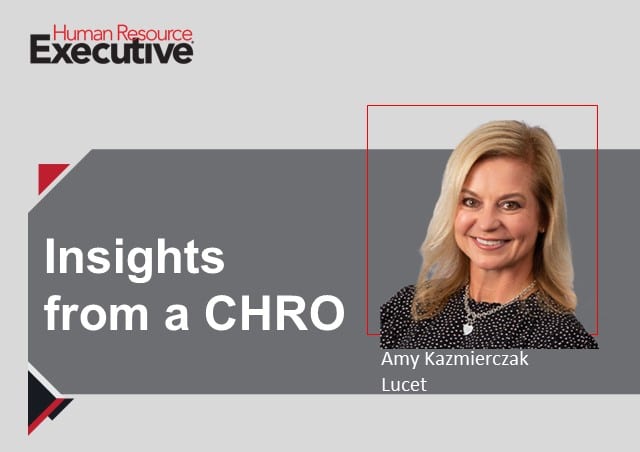Telemedicine
The current state of the economy poses various difficulties for dermatologists and their patients. Many medical practices seek to provide top-notch care while maintaining their independence. Artificial Intelligence (AI) presents a potential solution that can benefit both physicians and patients. However, ongoing debate remains regarding its implementation and overall value.
A recent survey showed that almost five times more patients prefer independently owned practices, feeling they have a more personal relationship with their provider, more trust in the practice, and believe the quality of care is higher. However, only 58% of patients actually know if their doctor is independent or corporate. It’s unfortunate that independent medical practices are declining across the country. The American Medical Association has listed 8 threats that physician private practices are facing, including increasing administrative burdens, low and declining payment rates, and the costly and challenging recruitment of new physicians. These challenges take physicians away from their patients, leading to a negative impact on patient care.
Dr. Reid Maclellan, a Harvard-trained physician, is on a mission to change the way physicians provide care to their patients. Twenty years after his 5th generation’s family office, Provident Life and Accident Insurance Company merged with Unum in 1999 to become the largest provider of long-term, short-term, and individual disability insurance policies, Dr. Maclellan began his new family office Cortina. Dr. Maclellan left his full-time position in the Department of Plastic Surgery at Harvard Medical School to create an innovative teledermatology platform that focuses on personalized, Board-Certified Dermatology care and delivers compounded medication to all 50 states.
Now, five years later, Cortina is expanding and partnering with top dermatology brick-and-mortar practices across the United States to make dermatology care more accessible. Cortina’s family office-backed acquisition model allows independent dermatology practices to focus entirely on their patients while still maintaining control over their practice. Although the private-equity consolidation model has been present in dermatology for over a decade, only 15% of dermatology practices are owned by private equity. Many in the field have expressed concerns about the potential for favoring profits over patient care. Doctors have a responsibility to prioritize their patients, but some feel that they have lost autonomy in private equity-backed practices.
To better understand how dermatology clinics and patients can use AI, teledermatology, and a family office-backed acquisition approach to address these issues, we spoke with Dr. Reid Maclellan.
Gary Drenik: Valued at $12.70 billion in 2021, the teledermatology market is projected to reach $67.43 billion by 2030. How will artificial intelligence be incorporated as the industry grows? What are some of the roadblocks to successfully incorporating AI in patient care?
Dr. Reid Maclellan: Artificial intelligence will assuredly not replace doctors in the next decade—but doctors who leverage AI will almost certainly replace those who resist it.
Earlier this year, JAMA Internal Medicine published a study conducted by UC San Diego and Johns Hopkins comparing the responses of physicians and ChatGPT to patient questions on a public social media forum. The study involved 195 randomly selected questions that medical doctors blindly rated.
Astonishing results emerged—according to the study, ChatGPT outperformed physicians in generating responses that 8 out of 10 doctors preferred. The graders also found ChatGPT’s explanations more comprehensive, accurate, and compassionate/empathetic than the physicians’ answers. With the increasing use of teledermatology surpassing the number of available dermatologists, AI can be a valuable tool to offer empathetic and thorough care.
The most significant roadblock is a lack of awareness. According to a recent Prosper Insights & Analytics survey, only about 15% of Millennials and 3% of Baby Boomers use telemedicine services regularly. If we want to truly serve patients with comprehensive care, one of our primary goals has to be bringing awareness and demonstrating the benefits of telemedicine using AI.
Prosper – Regularly Use Telemedicine
Although the survey reveals patients prefer live face-to-face care, there are simply not enough providers for everyone. With more exposure and experience using our model, we are confident patients will find the kind of quality care they are searching for.
Prosper – Never Use Telemedicine
Drenik: Teledermatology is becoming more popular, but some skin diseases still require in-person care. With only 3.3 board-certified dermatologists per 100,000 people, how can physicians ensure patients receive comprehensive care?
Maclellan: Patients deserve timely care; however, the average wait time currently ranges from 1 to 2 months, with some areas experiencing wait times of six months or more before they can be seen in person by a dermatologist. This issue is driven by a supply and demand imbalance that necessitates more dermatologists to cater to individuals with skin concerns. Implementing virtual dermatology can drastically decrease wait times, representing a crucial advancement in optimizing care.
Teledermatology, which is usually conducted through a 2D asynchronous platform, is considered by many to be more complicated than an in-person consultation. As a result, most healthcare professionals believe that only board-certified dermatologists in the United States who have received extensive training in skin diseases and continue their education should conduct teledermatology.
Virtual consultations are effective in treating various skin conditions. By adopting a digital-first approach, patients can receive timely treatment, and dermatologists can prioritize those who require in-person care, streamlining the process for better outcomes.
Drenik: How can companies such as Cortina Health provide patients with a comprehensive skincare experience, including access to both traditional in-person and virtual dermatological healthcare?
Maclellan: At Cortina Health, we aim to make top-quality dermatology care accessible to everyone. To achieve this goal, we have developed a teledermatology platform that combines the expertise of our national network of board-certified dermatologists with our proprietary technology. This enables our physicians to focus solely on providing the best possible care for their patients. Additionally, we have a national compounding pharmacy that allows our doctors to create personalized treatment plans that are both effective and accurate.
Cortina practices teledermatology in all 50 states; however, traditional in-person visits to examine patients are sometimes necessary. For that reason, Cortina is expanding its efforts by partnering with brick-and-mortar dermatologists throughout the U.S.
Independently owned dermatology practices maintain their brand name and remain in control of their practice when they join the Cortina family. Our centralized back-office platform and advanced technology enable our brick-and-mortar dermatologists to focus entirely on providing clinical care to their patients. Patient care is prioritized as they no longer divide attention between the daily tasks required to keep the clinic running.
In the next 3-5 years, our company aims to serve the nation with a comprehensive skincare experience by acquiring brick-and-mortar practices across the U.S. This will make us the first dermatology company to offer such services to our patients.
Drenik: For the last decade, dermatology groups have been acquired by private equity firms. How are family-office-backed approaches different, and how can they benefit physicians and patients in the healthcare industry?
Maclellan: When comparing family offices and private equity, the most significant differences lie in their investor makeup, motivations, and investment timeline. Private equity funds are generally raised by multiple limited partner contributors who seek a high rate of return over a 3 to 7-year period. Private equity buyers have a short time frame to generate sizable returns, which in the medical world often means increasing the number of patients seen per day, aggressively cutting costs, and limiting additional investment into a practice.
In contrast, family office investors directly invest their funds and are not driven by the needs and expectations of limited external partners with potentially competing priorities. As a result, family offices often have a much longer, more patient investment horizon driven by a desire to create long-term wealth and value instead of short-term returns. This aligns well with doctors who want to grow their practice’s value and reputation over the long term because business and investment decisions are made with a longer-term value-creation perspective.
Family office investors are also more likely to take an active role in the business, working with the doctors to drive that value. This means they are also more inclined to allow each practice to maintain more autonomy with their patients and staff. As a result, dermatologists can focus more on providing their patients with a comprehensive skin care experience rather than delivering short-term financial results.
Drenik: Are patients weary of receiving medical care from private equity-acquired medical practices? Are physicians weary of working for a private equity-acquired medical practice?
Maclellan: I cannot speak on behalf of patients or physicians in relation to private equity-acquired medical practices. However, it is certain that many independently owned dermatology practices are eager to work with Cortina’s family office-backed acquisition model. The primary reason dermatologists have shown interest in joining Cortina is because they wish to maintain their practice autonomy, which we support.
Our dermatologists have worked hard to build their brands and earn patient loyalty over the years. We do not wish to diminish that by acquiring their practices and changing everything, including their name. Instead, Cortina adapts to each practice’s unique culture and smoothly integrates post-acquisition, allowing each physician and staff to maintain their autonomy with their patients. Cortina works in the background to provide support to each practice.
Drenik: Thank you, Reid, for sharing how family-office-backed approaches benefit healthcare and demonstrating how an AI-centered approach creates long-term wealth and allows for practice autonomy and an improved skincare experience. I’m looking forward to seeing how AI and the family office-backed model will transform dermatology for both doctors and patients.
Credit: Source link





![What I Learned [+ Tools to Try] What I Learned [+ Tools to Try]](https://www.hubspot.com/hubfs/Untitled%20design%20-%202024-11-12T143944.345.png)





